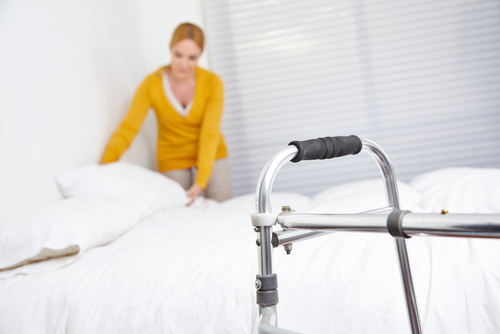Earlier this year, we explored the question of whether or not video cameras should be allowed in the private rooms of both nursing homes and assisted living facilities. California was one state in particular revisiting the issue with its Department of Social Services taking a second look at camera use earlier in the year. Now, the state has approved the use of cameras in assisted living facilities, with the Department of Social Services issuing new guidelines permitting in-room cameras as long as the patient and their families agree to it.
According to one assisted living facility interviewed by a local news station, after nearly a five-year struggle to get cameras allowed in patients’ rooms, these devices are “providing another layer of protection for loved ones.”
The stumbling block to in-patient room camera use all along has been privacy, a concern the California Department of Social Services has repeatedly voiced in the past: “We view these [assisted living facilities] as people’s homes, and we want people to have rights in their own home and balancing that between a business and a residence is something we have to be very careful about,” said Michael Weston, a spokesman for the Department of Social Services.
Indeed, under the new regulation in California, prior to the use of any cameras in patients’ rooms, each family will have to sign a waiver, which then has to be approved by the state’s Community Care Licensing Division.
The benefits of in-room cameras include the ability for family members to monitor care providers. Any kind of abuse and/or neglect would be recorded, and if an abuser happened to be on the staff, then he or she could be caught and terminated. In addition, the cameras could be used as deterrent. People know they are being recorded, which can serve to stifle abusive treatment. On the positive side, the family would also be able to observe the wonderful care that many staff members provide.
In addition if the nursing home or assisted living facility staff is monitoring the camera as well, it could help in caring for agitated or restless elders who may try to get out of bed or a chair without needed assistance. This could prevent falls or at least speed up help, should one occur. Oxygen tubes and other medical equipment that may easily be dislodged could be more closely watched so that if something is disturbed the staff can rush to the room and fix the problem.
There are, of course, disadvantages in providing this extra security step, including invasion of privacy. There is also the issue of dignity. Whether or not an elderly individual is aware of the camera, most would not appreciate their most intimate care being monitored by family members or anyone else. Also, potential reliance on the camera by staff could be a problem. The staff or nursing stations may begin to rely on cameras too much and limit the physical checks where the resident may want to ask for some non-urgent assistance or simply need human contact.
Proper risk management is key with security devices, including in-room cameras, to mitigate additional exposures that may arise from their use. Caitlin Morgan specializes in insuring nursing homes and assisted living facilities including helping with risk management strategies. Give us a call at 877.226.1027 to find out more about our insurance and risk management programs for assisted living facilities and nursing homes.
Sources: NBC.com, AgingCare.com


